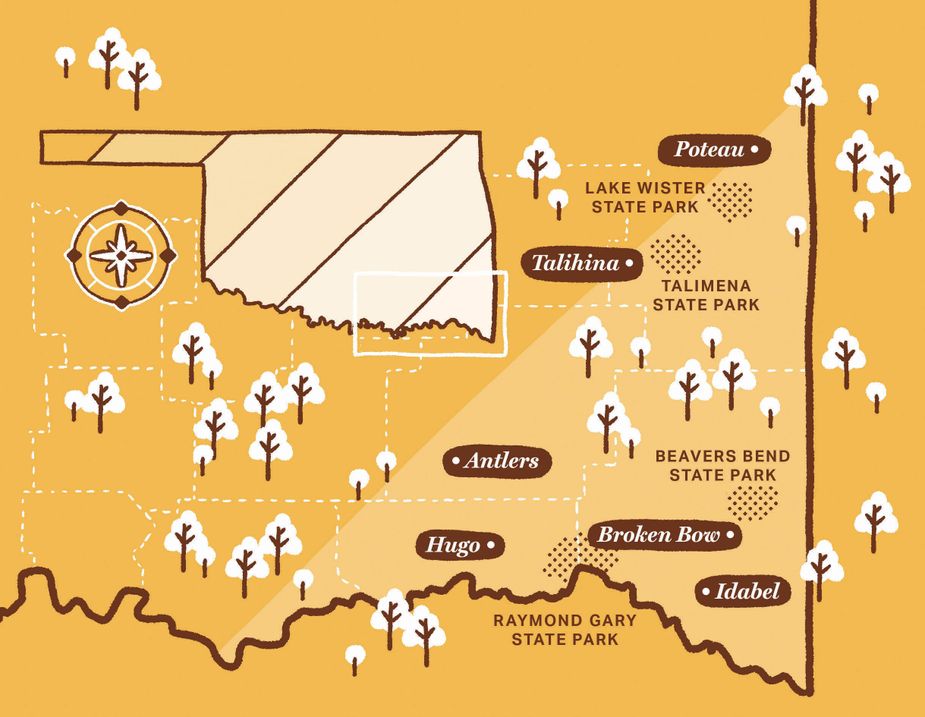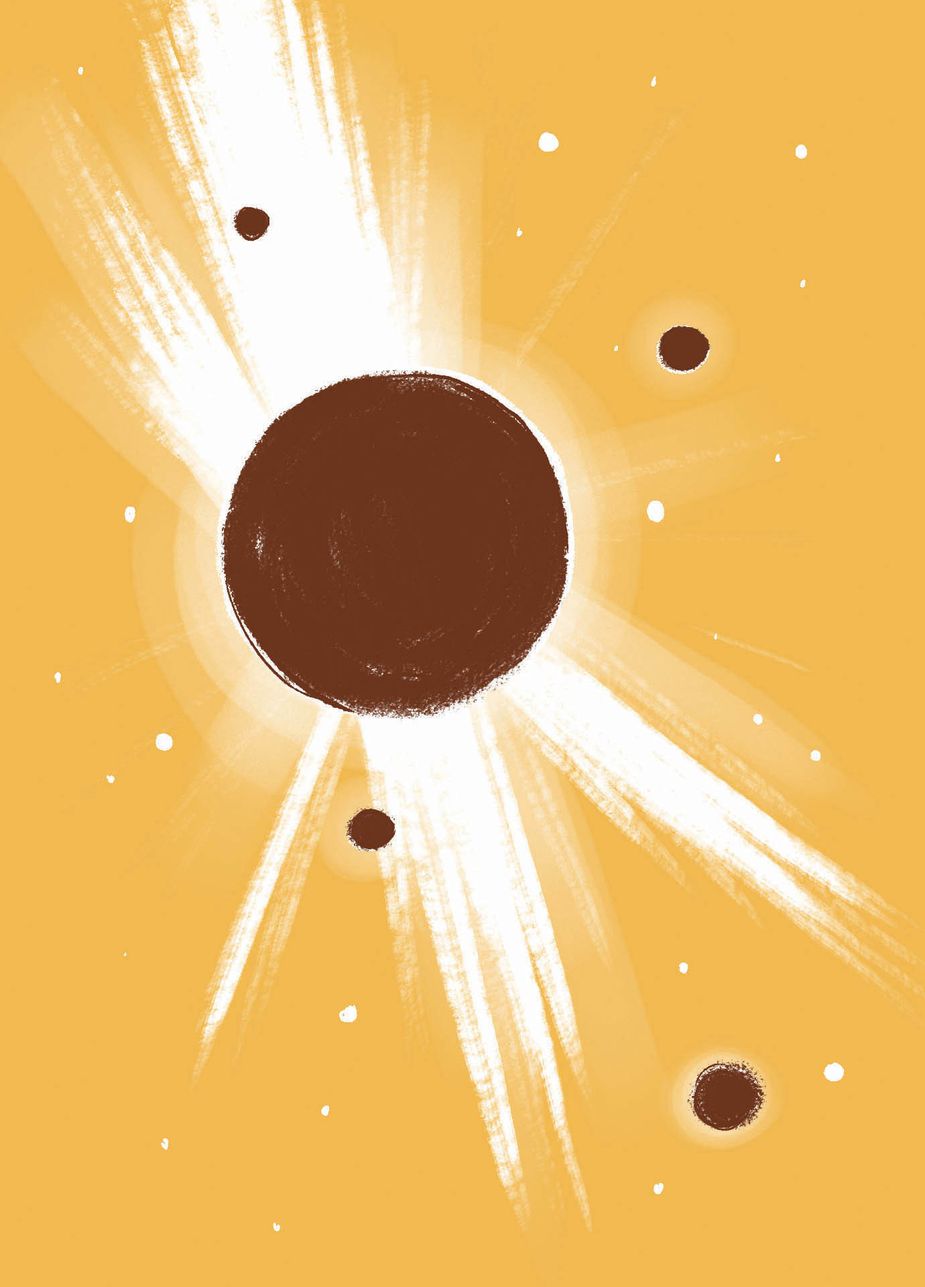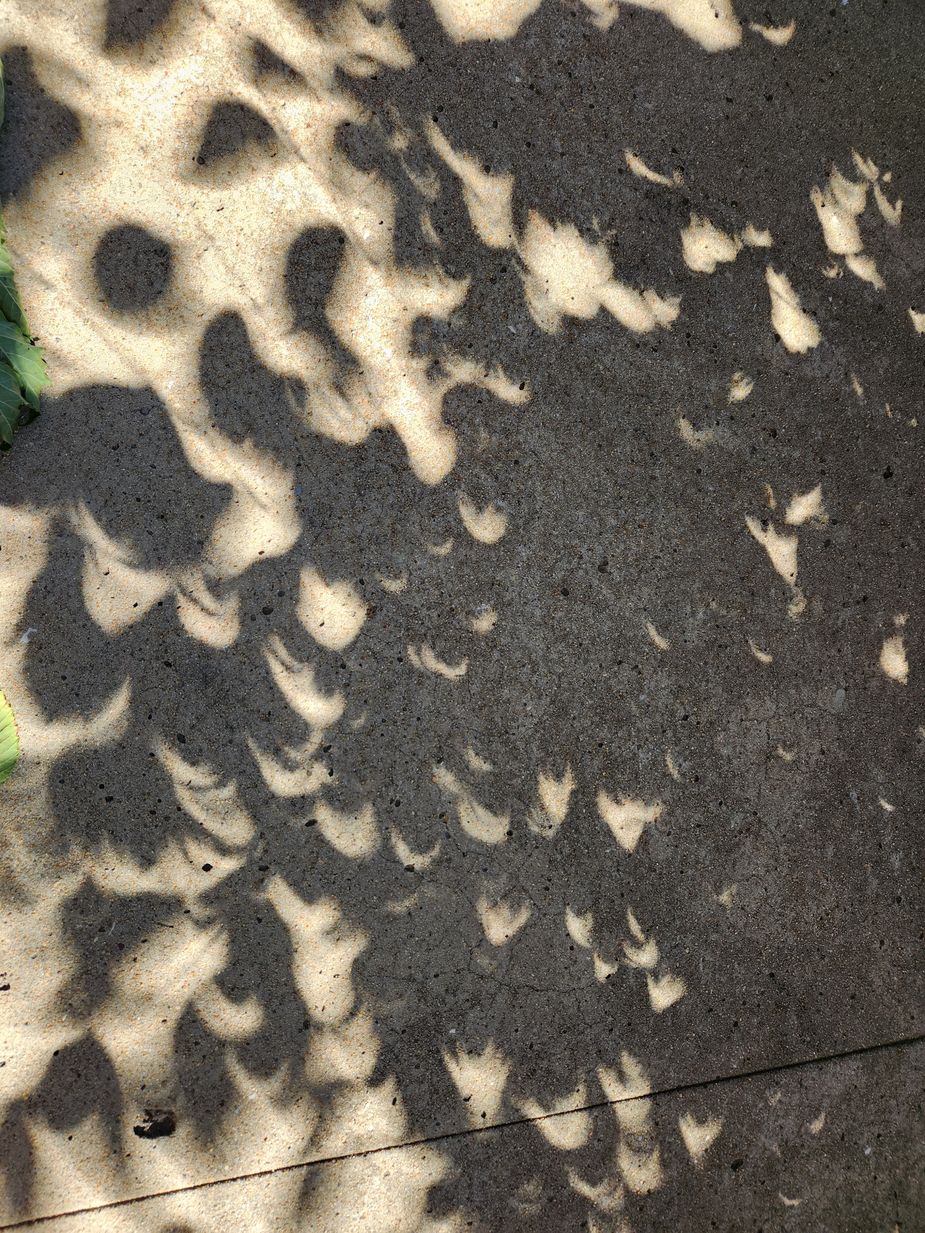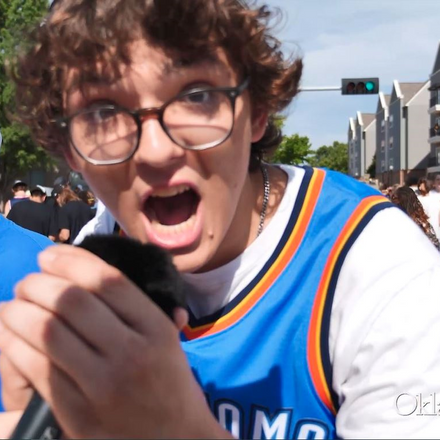There Goes the Sun
Published March 2024
By Nathan Gunter | 10 min read
On April 8, southeastern Oklahoma will plunge into midday darkness as the moon’s shadow travels across North America. Here’s everything you need to know about how to witness this stellar happening for yourself.

Illustration by JJ Ritchey
In The Histories, written around 430 BCE, the Greek historian Herodotus told of an unusual happening during a battle between the armies of Media and Lydia:
. . . another combat took place in the sixth year, in the course of which, just as the battle was growing warm, day was on a sudden changed into night. This event had been foretold by Thales, the Milesian, who forewarned the Ionians of it, fixing for it the very year in which it actually took place. The Medes and Lydians, when they observed the change, ceased fighting, and were alike anxious to have terms of peace agreed on.
As the armies of Media and Lydia met on the battlefield, the sun suddenly disappeared from the sky, inspiring both battalions to agree to a cease-fire. But what happened that day wasn’t a supernatural occurrence; in fact, Herodotus wrote it had been predicted—in what Isaac Asimov later would call “the birth of science”—by the astronomer Thales. That day in ancient Greece, the moon passed in front of the sun from the perspective of the armies of Media and Lydia, its shadow passing over them. For a group of warriors unfamiliar with heavenly machinations, the sudden change in the light must’ve seemed ominous; terrifying.
But eclipses of the sun happen all the time all over the world. And while they’re not an uncommon occurrence globally, the average human seldom gets to experience one in person. But this year—the afternoon of April 8, to be precise—the same shadow that frightened the ancient Greeks will pass over southeastern Oklahoma, allowing visitors to experience a once-in-a-lifetime cosmic event.

Most of Oklahoma will have a decent partial view of the eclipse, but to experience totality travelers will need to head to the southeast corner of the state. Illustration by JJ Ritchey
WHAT IS AN ECLIPSE?
A solar eclipse occurs when the moon passes directly between Earth and the sun. This causes the moon to cast a shadow on the face of the earth. We observe that shadow as a solar eclipse.

Illustration by JJ Ritchey
TOTAL ECLIPSE OF THE FACTS
1. During totality, the local temperature can drop by as many as ten degrees Fahrenheit.
2. What a time to be alive! The moon is moving ever so slowly away from the earth, so in about 600 million years, it will be too far away to completely cover the sun during an eclipse.
3. A total solar eclipse occurs when the sun’s disk is completely covered by the moon. This is possible because, in a wildly unlikely turn of events, the moon is both 400 times smaller than the sun and 400 times closer to us than the sun is, allowing the moon to completely cover the sun’s disk.
4. In Italy, it is believed that flowers planted during an eclipse grow to be brighter and more beautiful than flowers planted at other times. Try it out for yourself—Oklahoma’s planting season begins right around the time of this year’s eclipse.
5. There are at least two solar eclipses somewhere on Earth every year. But since 70 percent of the planet is covered in water, getting the chance to see one is rare.
FOLKLORE
Cultures all over the world and throughout history have experienced eclipses. Here are some of the beliefs that developed around these strange events:
• In Colombia, Indigenous people were said to shout at the heavens during an eclipse, promising to mend their ways and work harder.
• The Ojibwe, or Chippewa, people of southern Canada and the northern U.S. would fire flaming arrows at the sky, hoping to rekindle the sun.
• Norse mythology ascribed the disappearance of the sun to Loki—not Tom Hiddleston but the traditional trickster god—who created wolflike giants who swallowed the sun.
• In Transylvania, eclipses were said to happen because the sun got angry and covered itself in darkness—in response to the bad behavior of men. Which begs the question: How is the sun ever out at all?

Illustration by JJ Ritchey
SAFETY
You’ve almost certainly heard that looking at a solar eclipse is dangerous—but why? Simple: Looking at an eclipse is dangerous, because looking at the sun is always dangerous. Except during the brief period when an eclipse is total—when the moon is completely blocking the sun’s face—it is not safe to look directly at the sun without special eye protection. Similarly, it is also dangerous to view the sun through a camera, binoculars, a telescope, or a phone—not only can it harm your eyes, it also can damage the components of the camera.

Illustration by JJ Ritchey
GLASSES
To safely view an eclipse, use solar glasses or a viewer specifically designed for it. Regular sunglasses will not suffice—solar viewers are thousands of times darker. Look for a pair of glasses or a viewer with the ISO 12312-2 international standard.
• Get your Oklahoma Today commemorative eclipse glasses
Current Oklahoma Today subscribers and those who subscribe online before March 22, 2024 will receive their commemorative eclipse glasses by mail. Non-subscribers may order online here.

Oklahoma Today's commemorative eclipse glasses must be ordered before March 22.
THEN . . . IT GETS WEIRD
Total solar eclipses offer a variety of odd and unforgettable visual phenomena, including a noticeable drop in temperatures, unusual behavior by animals, and more. During the eclipse, be sure to look for:

As the moon covers the sun, take your eyes away from the sky for a moment and examine the shadows around you. There's a good chance you'll see crescent shapes under the trees and other through other little bright openings.
Baily’s Beads
Through your ISO 12312-2 viewer, look for a sliver of light around the edge of the moon that looks like a string of bright pearls. These occur when the sun peeks through valleys and low spots on the moon’s surface.
Solar Prominences
Looking through your viewer, you also may notice the large structures known as solar prominences or filaments, which are caused by the sun’s plasma interacting with its magnetic field. During an eclipse, they may be visible behind the moon. Just be sure not to look for these or Baily’s Beads without your viewer.
Daygazing
During a total eclipse, look for visible planets and stars in the sky. When totality begins around 1:30 p.m. local time in Oklahoma, Mercury and Venus will be close to the sun; Mars and Jupiter will be above the horizon; and if you’re lucky, you may even be able to spot Uranus with the naked eye. It’ll be near Jupiter.
Shadow Play
Even though all eyes will be on the sky during totality, take a moment to look at the ground, as the shadows made by trees and other objects will be filled with tiny crescents. To get a taste of the effect for yourself, bring a colander with you to the eclipse and observe the shadows that come through the tiny holes.







